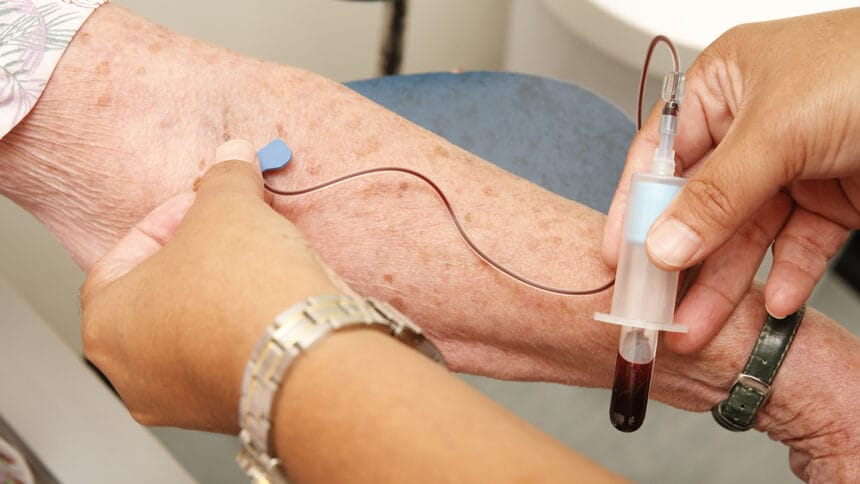
A blood test demonstrated high accuracy for detecting Alzheimer’s disease among people with cognitive symptoms, according to a study presented at the Alzheimer’s Association International Conference and published in JAMA. The test, called the amyloid probability score 2, or APS2, combines measurements of certain proteins in blood that are associated with Alzheimer’s disease.
Researchers evaluated the APS2 test in more than 1,200 people, average age 74, from primary care and specialty memory clinics in Sweden. The blood test showed around 90% accuracy in detecting Alzheimer’s disease across different healthcare settings and analysis methods.
Notably, the APS2 test outperformed doctors in diagnosing Alzheimer’s disease when physicians did not have access to biomarker data. Dementia specialists came in with 73% accuracy, and primary care doctors achieved a 61% accuracy rate.
The study found the blood test performed well even when samples were analyzed prospectively on an ongoing basis, as would occur in real clinical practice. According to the published paper, this finding indicates that the test results are robust and consistent.
Using two cutoff values instead of one improved the test’s ability to definitively identify Alzheimer’s disease in some cases. This approach, however, also created an “intermediate” category for some results that were between the two cutoffs.
The researchers suggested that the APS2 blood test shows promise for use in primary care settings to improve early detection of Alzheimer’s disease and help determine which individuals should be referred to specialists. The test’s high accuracy potentially could reduce misdiagnoses and allow for more timely treatment, they said.
Although the results are encouraging, the authors noted that more research is needed to evaluate how using this blood test would affect clinical care in practice. The study demonstrates the test’s diagnostic capabilities, but its effects on patient outcomes remain to be seen.



